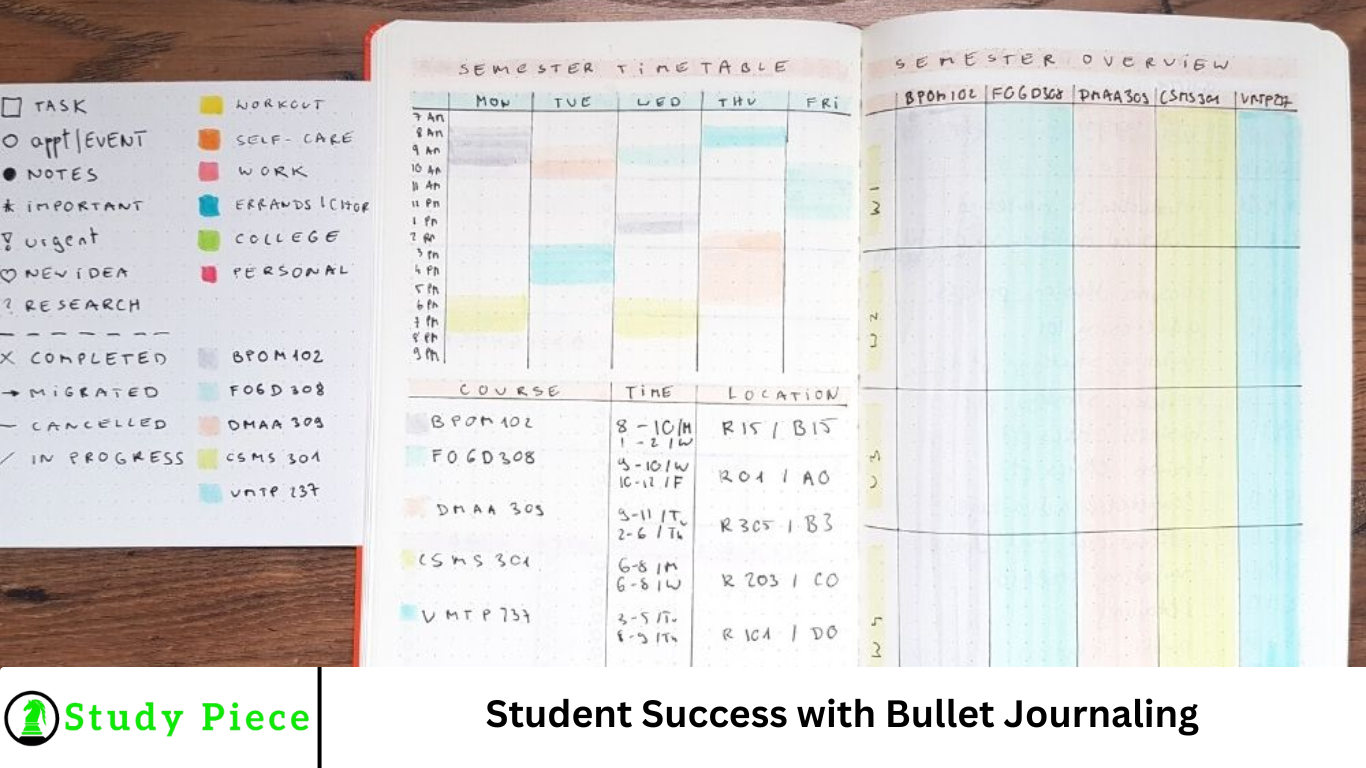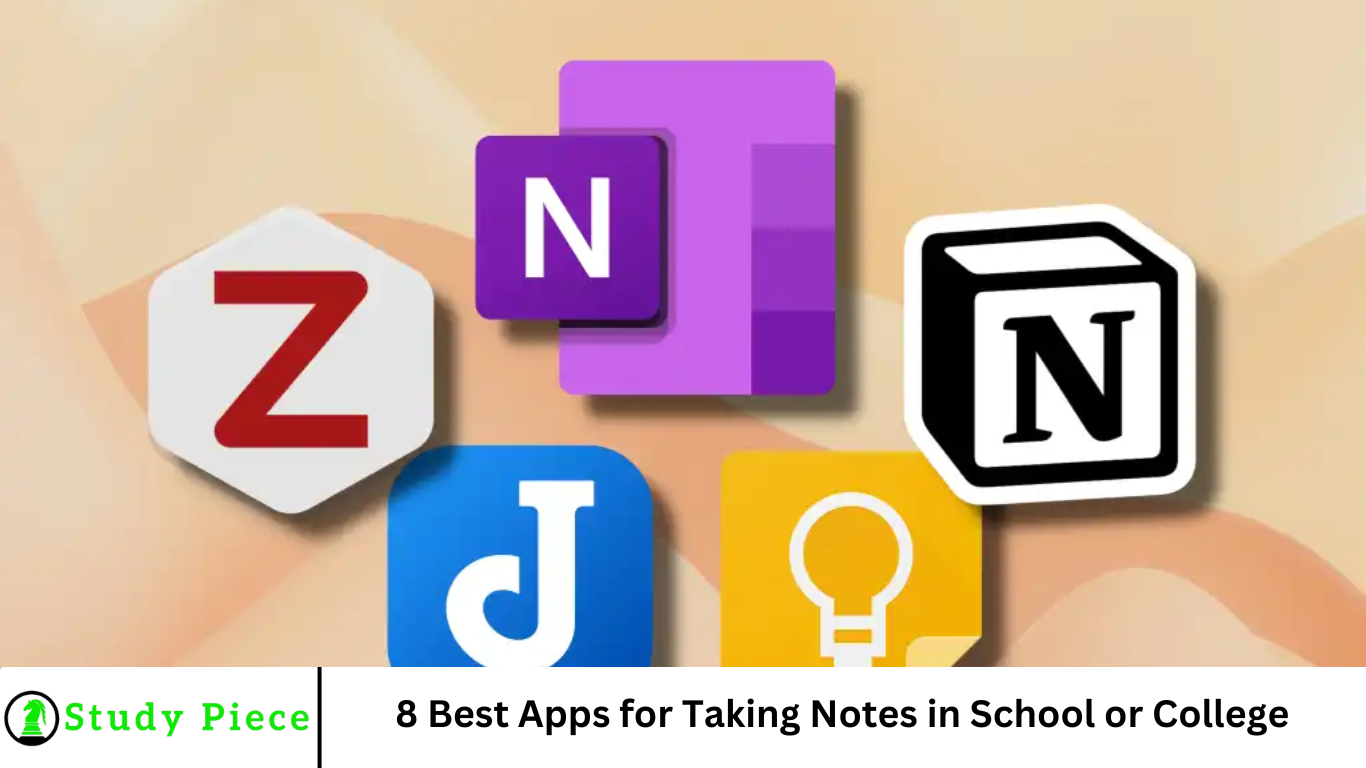Fast-paced academic environment, students are constantly juggling deadlines, exams, assignments, and extracurricular activities. Staying organized and focused can feel overwhelming—but that’s where bullet journaling comes in.
More than just a trend, bullet journaling is a customizable system that empowers students to take control of their time, responsibilities, and personal growth. Whether you’re a high school student preparing for exams or a college student managing a packed semester, bullet journaling for students can be a game-changer.
This article explores how bullet journaling contributes to student success, with actionable tips, page ideas, and strategies to help you get started and stay consistent.
More Read: Cornell Note-Taking Method: The Ultimate Guide to Effective Note-Taking
What Is Bullet Journaling?
Bullet journaling, often abbreviated as “BuJo,” is an analog planning system created by Ryder Carroll. It combines elements of a diary, planner, and to-do list in a single notebook. The goal? To help users organize their lives and become more mindful of how they spend their time.
Unlike pre-made planners, a bullet journal is fully customizable. Students can design their own layouts to suit their academic schedule, personal habits, and mental wellness needs. It’s not just about tracking tasks—it’s about designing a life that works for you.
Why Bullet Journaling Works for Students
1. Improved Time Management
Time management is one of the top skills students need to master. A bullet journal enables students to:
- Plan out weekly or monthly schedules.
- Break down large projects into manageable tasks.
- Visualize deadlines and exam dates.
2. Reduced Stress and Anxiety
Keeping everything in one place helps reduce the mental clutter that contributes to stress. Journaling can also serve as a form of self-care, allowing students to reflect, decompress, and gain clarity.
3. Increased Productivity
By prioritizing tasks using symbols (bullets), checklists, and trackers, students can focus on what matters most. The act of physically writing out tasks helps reinforce memory and commitment.
4. Boosted Motivation
Seeing your progress, whether through a habit tracker or a completed to-do list, provides a psychological reward that encourages consistency and discipline.
Getting Started with Bullet Journaling for School
Step 1: Choose Your Journal and Tools
You don’t need fancy supplies to start a bullet journal. A simple notebook and pen will do. However, many students enjoy using:
- Dot grid notebooks (e.g., Leuchtturm1917 or Moleskine)
- Colored pens or markers
- Rulers and stencils
- Washi tape and stickers (optional for decoration)
Step 2: Learn the Basic Bullet Journal Structure
Ryder Carroll’s original system uses these core components:
- Index: A table of contents to find pages quickly.
- Future Log: A high-level overview of the year/month.
- Monthly Log: A snapshot of the month’s goals and events.
- Daily Log: Day-by-day tasks, notes, and appointments.
- Custom Collections: Personalized pages such as study plans or book lists.
Step 3: Customize for Student Life
Bullet journals shine when adapted to your unique academic needs. Consider adding student-focused layouts like:
10 Bullet Journal Page Ideas for Students
- Semester Overview
- Map out your course schedule, professor contacts, and class locations.
- Assignment Tracker
- Log due dates, project milestones, and submission statuses.
- Exam Study Plan
- Break subjects into topics, set review dates, and track your confidence level.
- Daily and Weekly Spreads
- Plan your day hour-by-hour or organize your week by class and task priority.
- Grade Tracker
- Monitor your performance in each class to stay motivated and on track.
- Study Habit Tracker
- Use grids or charts to track study sessions, breaks, and Pomodoro cycles.
- Reading List
- Keep track of required reading, notes, and personal reading goals.
- Goal Setting Pages
- Define your academic, personal, and extracurricular goals.
- Self-Care Log
- Monitor your sleep, nutrition, exercise, and mental health habits.
- Brain Dump Section
- A free space to write down random thoughts, reminders, or ideas for later processing.
Tips for Staying Consistent with Bullet Journaling
1. Start Simple
Don’t worry about aesthetics or perfection. Focus on function. You can always improve your layouts later.
2. Make It a Habit
Try journaling at a specific time each day—like before bed or right after class.
3. Use It as a Reflection Tool
At the end of each week or month, reflect on what worked, what didn’t, and what to improve.
4. Incorporate Color Coding
Assign colors to different subjects or categories for quick reference and a visual pop.
5. Join the Community
The #bulletjournal and #studygram communities on Instagram, Reddit, and TikTok offer endless inspiration, motivation, and layout ideas.
Real-Life Examples of Student Bullet Journals
Case Study 1: High School Junior
Sophia, a high school junior preparing for college entrance exams, used her bullet journal to:
- Create a SAT study schedule.
- Track essay deadlines.
- Log volunteer hours.
Result: Her stress levels dropped, and she felt more in control during application season.
Case Study 2: College Freshman
David, a college freshman, struggled to adjust to university life. Using a bullet journal helped him:
- Manage his time between classes and part-time work.
- Track mental health with a mood tracker.
- Plan meals and grocery lists.
Result: Better grades and improved well-being.
Digital vs. Paper: Is Analog Right for You?
In an era of apps and digital planners, why choose paper?
Pros of Analog Bullet Journals:
- No distractions from notifications
- Improves memory and focus
- Encourages mindfulness
- Fully customizable and creative
However, some students benefit from combining analog with digital tools. For example:
- Use Google Calendar for reminders.
- Use a bullet journal for planning and reflection.
Frequently Asked Question
What is bullet journaling and how can it help students succeed?
Bullet journaling is a customizable planning system that combines to-do lists, calendars, and personal notes into one organized notebook. For students, it improves time management, increases productivity, and reduces stress by helping them keep track of assignments, exams, and personal goals in one place.
How do I start a bullet journal as a student?
Start with a simple notebook and pen. Set up key pages like a semester overview, monthly log, weekly planner, and assignment tracker. Use bullets, symbols, and short notes to keep entries concise. Begin with basic layouts and add custom pages as needed.
What pages should students include in a bullet journal?
Useful pages include:
- Semester schedule
- Assignment and exam tracker
- Weekly/daily to-do lists
- Study planners
- Grade tracker
- Habit and mood trackers
- Goal-setting pages
These layouts help students stay organized and focused throughout the school year.
How much time does bullet journaling take each day?
Bullet journaling can take as little as 5 to 15 minutes per day. It’s flexible—some students journal daily, while others do weekly setups. The key is consistency and using it as a tool to stay on track without becoming a time burden.
Do you need to be artistic to bullet journal effectively?
Not at all. Bullet journaling is about function, not perfection. A clean, minimalist layout is just as effective as a decorative one. Many successful student journals are simple and focused on productivity rather than aesthetics.
Can bullet journaling help students with ADHD or time management issues?
Yes. Bullet journaling can provide structure and visual reminders that support executive functioning. Using symbols, task prioritization, and habit trackers can help students with ADHD stay focused and build consistent routines.
What’s the difference between bullet journaling and using a planner?
Traditional planners have pre-designed layouts, while bullet journals are fully customizable. Students can design their own spreads to match their academic needs, making bullet journaling more flexible and personal than standard planners.
Conclusion
Bullet journaling offers more than just a planning tool—it provides students with a structured, personalized system for academic and personal growth. Whether your goal is to stay on top of deadlines, improve your grades, or simply feel more in control, bullet journaling can be a transformative habit. Start small, stay consistent, and make your bullet journal a space that motivates and inspires you. Student success isn’t about being perfect—it’s about being intentional, and bullet journaling is the perfect place to begin.



